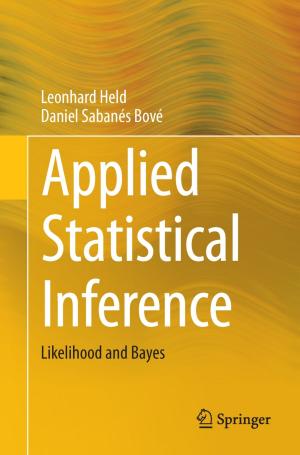Theoretical and Experimental Studies on Non-Fourier Heat Conduction Based on Thermomass Theory
Nonfiction, Science & Nature, Science, Physics, Thermodynamics, Technology, Material Science| Author: | Hai-Dong Wang | ISBN: | 9783642539770 |
| Publisher: | Springer Berlin Heidelberg | Publication: | February 7, 2014 |
| Imprint: | Springer | Language: | English |
| Author: | Hai-Dong Wang |
| ISBN: | 9783642539770 |
| Publisher: | Springer Berlin Heidelberg |
| Publication: | February 7, 2014 |
| Imprint: | Springer |
| Language: | English |
This book mainly focuses on the theoretical and experimental study of non-Fourier heat conduction behavior. A novel thermomass theory is used as the theoretical basis, which provides a general heat conduction equation for the accurate prediction of non-Fourier heat conduction. In order to prove the validity of this thermomass theory, a large current was used to heat the metallic nanofilm at the minimum temperature of 3 K. The measured average temperature of the nanofilm was notably higher than the prediction of Fourier’s heat diffusion equation, while matching well with the general heat conduction equation. This is the first time that steady non-Fourier heat conduction has been observed. Moreover, this book concerns the role of electron-phonon interaction in metallic nanofilms, which involves the breakdown of the Wiedemann-Franz law at low temperatures and interfacial thermal resistance at femtosecond timescales. Readers will find useful information on non-Fourier heat conduction and the latest advances in the study of charge and heat transport in metallic nanofilms.
This book mainly focuses on the theoretical and experimental study of non-Fourier heat conduction behavior. A novel thermomass theory is used as the theoretical basis, which provides a general heat conduction equation for the accurate prediction of non-Fourier heat conduction. In order to prove the validity of this thermomass theory, a large current was used to heat the metallic nanofilm at the minimum temperature of 3 K. The measured average temperature of the nanofilm was notably higher than the prediction of Fourier’s heat diffusion equation, while matching well with the general heat conduction equation. This is the first time that steady non-Fourier heat conduction has been observed. Moreover, this book concerns the role of electron-phonon interaction in metallic nanofilms, which involves the breakdown of the Wiedemann-Franz law at low temperatures and interfacial thermal resistance at femtosecond timescales. Readers will find useful information on non-Fourier heat conduction and the latest advances in the study of charge and heat transport in metallic nanofilms.















